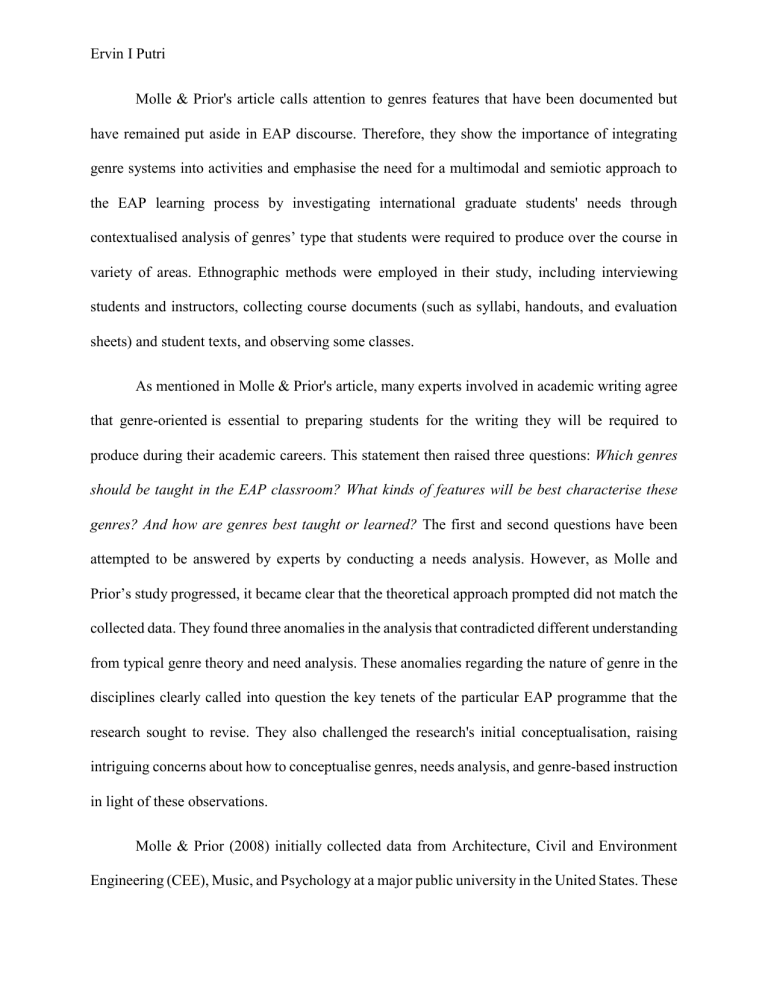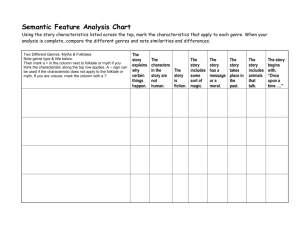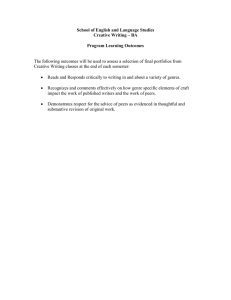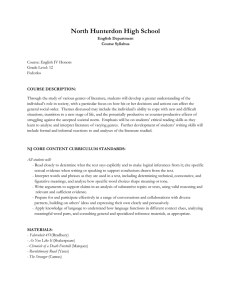
Ervin I Putri Molle & Prior's article calls attention to genres features that have been documented but have remained put aside in EAP discourse. Therefore, they show the importance of integrating genre systems into activities and emphasise the need for a multimodal and semiotic approach to the EAP learning process by investigating international graduate students' needs through contextualised analysis of genres’ type that students were required to produce over the course in variety of areas. Ethnographic methods were employed in their study, including interviewing students and instructors, collecting course documents (such as syllabi, handouts, and evaluation sheets) and student texts, and observing some classes. As mentioned in Molle & Prior's article, many experts involved in academic writing agree that genre-oriented is essential to preparing students for the writing they will be required to produce during their academic careers. This statement then raised three questions: Which genres should be taught in the EAP classroom? What kinds of features will be best characterise these genres? And how are genres best taught or learned? The first and second questions have been attempted to be answered by experts by conducting a needs analysis. However, as Molle and Prior’s study progressed, it became clear that the theoretical approach prompted did not match the collected data. They found three anomalies in the analysis that contradicted different understanding from typical genre theory and need analysis. These anomalies regarding the nature of genre in the disciplines clearly called into question the key tenets of the particular EAP programme that the research sought to revise. They also challenged the research's initial conceptualisation, raising intriguing concerns about how to conceptualise genres, needs analysis, and genre-based instruction in light of these observations. Molle & Prior (2008) initially collected data from Architecture, Civil and Environment Engineering (CEE), Music, and Psychology at a major public university in the United States. These Ervin I Putri disciplines were chosen because they have a high number of students in the EAP course, and the departments also represented different types of fields (professional vs more conventionally academic). Unfortunately, participants by the psychology department were too limited to support in-depth analysis. Therefore, four courses observed are two in architecture, one in CEE, and one in music. The instructors who participated in the study were all native English speakers from the United States and faculty members in the students' departments. Molle & Prior (2008) highlights that although the examples investigated came from various fields, and genres were clearly dynamic and strongly situated in specific contexts, it was also clear that key dimensions of genres (e.g., variability, embeddedness in systems, multimodality, and hybridity) characterised discourses across diverse contexts. As a result, these genre characteristics cannot be neglected by an EAP curriculum designed to prepare students for the writing activities they may experience over their academic careers. They suggest that the EAP writing program classes for graduate students, which mostly still privilege the linguistic features of texts rather than the practices of a genre system, could promote better attention based on these aspects of multimodal genre systems.


